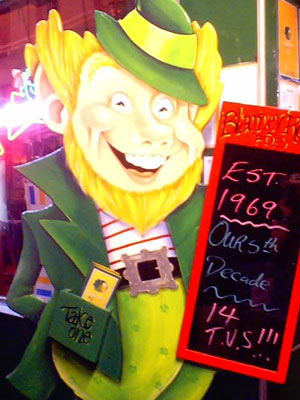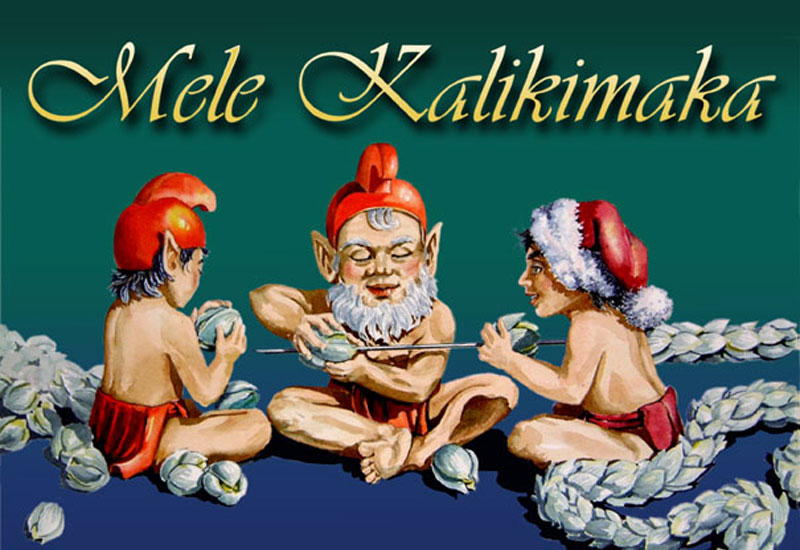They are very little people that steal things in the night. They are not evil. They just do mischief. For example, if something goes missing, they say the Menehune took it. Its a joking thing. Some say the Menehune are suppose to possess magical powers, you know cuz you never see them and theyre suppose to randomly build stuff. One day nothing will be there and then, the next day, a wall will show up or something. Ive never heard of anyone actually seeing this, but its how the story goes. Like I said earlier its used as jokingly when something goes wrong or is unexpected.
Analysis:
Collin Evans was born in Hawaii. He grew up on the main island and attended Hawaiian school all his life. He recently moved to California and is attending the University of Southern California to major in Mechanical engineering.
Collin heard of the Menehune when he was a very young boy. He says it is mainly known among Hawaiian natives. It is something someone may bring up at a party when something goes wrong. He describes them as very small, smaller creature/ people. He doesnt really know what they look like, except that theyre small like a leprechaun. Although he never actually believed in them, he jokes about it sometimes with family or when he is in Hawaii with friends. He does not mention it in California because most people have never heard of them.
The Menehune appear to be extremely similar to the leprechaun. They both are involved in trickery and mischief. Moreover, they are both engrained icons of their own cultures. The Menehune and leprechauns have become emblems in society. Although the Menehune are not as well known world wide, native Hawaiians know all about them. However, the resemblance between the two stands out the most to me as can be seen from Figure 1 and Figure 2. Figure 3 in the top right corner shows another image of the Menehune. Notice the round belly, pointed ears, hat, and jolly appearance. Now look at Figure 2. The leprechaun displays corresponding features. Moreover, it further supports the previous statement of iconic incorporation in society. The Menehune is utilized by a water company in hopes the creature will help sell water, while the leprechaun is attracting potential customers to a restaurant. Their startlingly similar appearance leads me to believe that the water company may hope to gain from their related appearances, for the well known leprechaun figure can be recognized by tourists.
Interestingly enough, over the years the Menehune have shrunk in size. The question is why? The Menehune are believed to have been real people of Marquesas Islander decent, arriving in Hawaii between 0 to 350 A.D. Later in 1100 AD, there was an invasion from the Tahitaians. Linguistic evidence found that the Tahitian word Manahune meant class of workers or slaves. This could be a possible explanation of why the Menehune are supposed to be good builders, for they may have been forced to build temples and structures for their masters. It was also known that the Menehune worked only at night under the glow of the moon. If they could not finish a given task in a single night, they abandoned it forever. This may be because in Hawaii it is hot and humid during the day and night time may be a better conducive atmosphere. Or it also could have been that those Menehune that escaped enslavement were only active at night as to go undetected. Furthermore, the social ranking of the Menehune as slaves caused a blow to their pride, honor, and thus physical size. The belittlement over the decades or centuries due to their low social status was a way for the Tahitaians to keep their power.
Again, similarly, in Ireland there were the sí (‘shee’) or spirits of the mound. People worshiped the Si until St. Patrick came along and brought with him the beliefs of Christianity. England began a process of ‘Anglicization’ which aimed at uniting Ireland and England, and thus discrediting the Si. Over time, they too began to shrink and now you have the figure known as the Leprechaun. When comparing the two histories, you have an invasion of a new group that changes the socio-economic and religious conditions. Additionally, in both cases, real people shank in the eyes of society due to vilification.
Annotation:
The Menehune are explained in more detail on Encycolepedia Mythica, under the article Menehune, written by Hugh D. Mailly and published on the 3rd of March in 1997 <http://www.pantheon.org/articles/m/menehune.html>.



